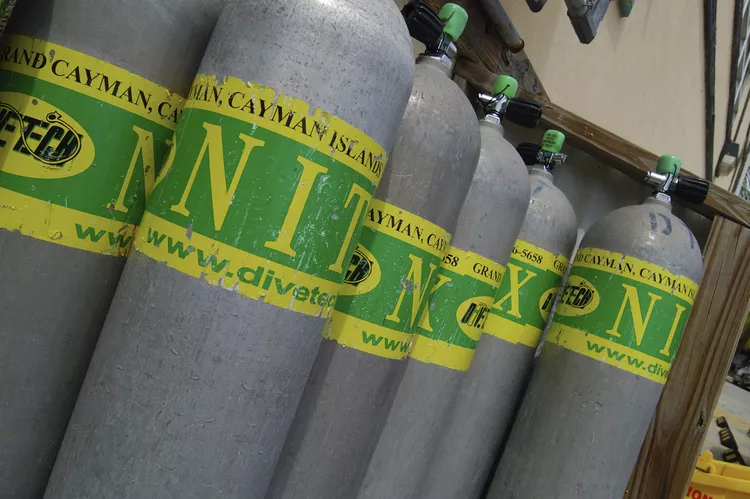1. Summary
This article discusses the importance of calculating a Maximum Operating Depth (MOD) for divers, particularly when using enriched air nitrox or other mixed gases. It covers the method for calculating MOD, provides a cheat sheet for common breathing gases, and emphasizes the necessity of adhering to these limits during dives for safety.
Why (and When) Should You Consider Your MOD?
A maximum operating depth (MOD) is a depth limit based on the percentage of oxygen in a diver’s breathing gas.
Why Should a Diver Calculate a Maximum Operating Depth?
Breathing high concentrations of oxygen can lead to oxygen toxicity, which can be fatal while diving. The concentration, or partial pressure, of oxygen in a diver’s gas increases with depth. Consequently, the higher the percentage of oxygen, the shallower the depth at which it becomes toxic. Therefore, divers calculate a MOD to ensure they do not descend beyond a depth where the oxygen in their tank may become toxic.
Should I Calculate My MOD on Every Dive?
Divers should calculate the MOD for their dives whenever enriched air nitrox, trimix, or pure oxygen is used. Moreover, technical divers who engage in deep air diving are also required to calculate MODs. However, a scuba diver breathing regular air and remaining within recreational dive limits does not need to calculate a MOD for their dive. In fact, during most recreational dives, the maximum depth will be influenced by factors such as the no-decompression limit, narcosis, and the diver’s experience level rather than the MOD.
How to Calculate a Maximum Operating Depth
Determine Your Oxygen Percentage:
If you are diving on air, the oxygen percentage in your tank is 20.9%. When using enriched air nitrox or trimix, utilize an oxygen analyzer to ascertain the oxygen percentage in your scuba tank.
Determine Your Maximum Partial Pressure of Oxygen:
Most scuba training organizations advise that divers limit the partial pressure of oxygen for a dive to 1.4 ata. Depending on the type of diving and the intended use of the breathing gas, a diver may choose to adjust this number higher or lower. In technical diving scenarios, for instance, pure oxygen is often utilized at partial pressures exceeding 1.4 ata for decompression stops.
Calculate Your Maximum Operating Depth Using This Formula:
{(Maximum partial pressure of oxygen / percentage of oxygen in tank) – 1} x 33 ft
EXAMPLE:
Calculate the MOD for a diver breathing 32% oxygen who intends to dive to a maximum oxygen partial pressure of 1.4 ata.
• Step one: substitute the appropriate numbers into the formula.
{ (1.4 ata / .32 ata) – 1 } x 33 feet
• Step two: perform the simple arithmetic.
{ 4.38 – 1 } x 33 feet
3.38 x 33 feet
111.5 feet
• In this scenario, round the 0.5 decimal down, not up, for safety.
111 feet is the MOD.
Cheat Sheet of Maximum Operating Depths for Common Breathing Gases
Here are some MODs for common breathing gases using a partial pressure of oxygen of 1.4 ata:
- Air: 21% Oxygen – MOD 187 feet
- Nitrox 32: 32% Oxygen – MOD 111 feet
- Nitrox 36: 36% Oxygen – MOD 95 feet
- Pure Oxygen: 100% Oxygen – MOD 13 feet
Putting a Maximum Operating Depth Into Use
While understanding how to calculate a MOD is beneficial, divers must also ensure they stay above their depth limit during dives. One effective method for divers to maintain adherence to their MOD is by using a dive computer designed for nitrox or mixed gases. Most dive computers are programmed to alert the diver if they exceed their MOD or partial pressure limits.
Additionally, divers utilizing enriched air or other mixed gases should label their tanks with the MOD of the gas inside. If a diver accidentally exceeds the MOD indicated on their tank, a buddy may notice the label and provide a timely alert. Labeling the MOD on the tank, in conjunction with other pertinent information about the gas contained, also prevents divers from mistaking their tank for one filled with air.
Now you can calculate a maximum operating depth for any breathing gas that contains a specific percentage of oxygen. Safe diving!





